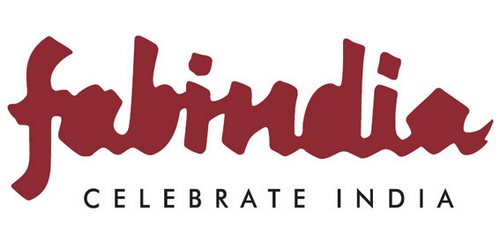The Marketing mix of Fabindia analyses the 4Ps of Fabindia, which includes the Product, Price, Place, and Promotion of Fabindia. Fabindia is a community-owned private company of Indian origin. It is in the retail and lifestyle sector and deals in accessories and apparel stores.
The company has targeted the middle-class and upper-class sections of society as its possible customers interested in actual Indian products. The company has been a source of employment in rural India and has made it to the international platform with beautiful designs and skilled labor. Some of its essential competitors are as follows-
- Cotton Emporium
- Khadi Gram Udyog
- Good Earth
About Fabindia
- Type: Private Company
- Industry: Retail, fashion, home furnishings
- Founded: 1960
- Founder: John Bissell
- Headquarters: New Delhi, India
- Area served: India, United States
- Key people: William Bissell, Chairman, and Neeraj Bhargava, Managing Director
- Number of employees: 4,000+
Table of Contents
Fabindia Product Strategy
Fabindia is an Indian company whose portfolio includes authentic products made in India. Nearly forty thousand craftsmen and artisans from all over the country are responsible for these handmade ethnic products of fab India.
The product mix of Fabindia in 2023 is as follows(Source)
- Clothing: Fabindia is known for its ethnic and traditional clothing for both men and women. Their clothing range includes sarees, kurtas, salwar kameez, shirts, dresses, and more.
- Home Furnishings: Fabindia offers a variety of home furnishings and decor items, including bed linens, tablecloths, cushion covers, curtains, and rugs. These are often made using traditional Indian textiles and techniques.
- Furniture: Fabindia provides a selection of furniture items like wooden chairs, tables, cabinets, and beds, often featuring traditional Indian designs and craftsmanship.
- Personal Care: Fabindia has a range of products, including skincare, haircare, and wellness items. This includes soaps, shampoos, creams, oils, and herbal products.
- Accessories: Fabindia offers a range of accessories, including jewelry, bags, scarves, and stoles, often featuring traditional Indian motifs and craftsmanship.
- Organic Food Products: Fabindia has ventured into organic food products, including spices, grains, pulses, herbs, and condiments. They also offer organic teas and beverages.
- Gifts and Decor: Fabindia has a selection of unique gift items and home decor pieces that often feature handcrafted and artisanal designs.
- Kids’ Clothing and Accessories: Fabindia offers a variety of clothing and accessories for children, including traditional Indian attire and modern styles.
- Footwear: They also have various traditional and contemporary options for men, women, and children.
- Essentials: Fabindia provides essential items such as masks, hand sanitizers, and other wellness products, especially in response to the COVID-19 pandemic.
Fabindia Place Strategy
Fabindia is a chain store established in 1960 by John Bissell, with its headquarters based in New Delhi, India. It started as an exporter of home furnishings but later opened its first retail store in 1976 in New Delhi. Currently, the brand has an international presence through its retail outlets in several countries like Rome, Italy, Bahrain, Dubai, and UAE, and more than one hundred and forty-one domestic outlets spread all over India.
Its distribution network includes three segments- Institutional sales, wholesale exports, traditional wholesale channels, and Fabindia stores. It has a continuous supply chain from rural India and has opened several online stores to meet the demands of its customers successfully from any place.
Here are five critical aspects of Fabindia’s place strategy:
- Retail Stores: Fabindia strategically locates its stores in high-traffic urban and semi-urban areas across India. These stores serve as physical touchpoints for customers to explore and purchase its products, fostering a strong brand presence.
- Franchise Model: Fabindia often operates through a franchise model, expanding its footprint to various locations while maintaining quality standards and consistency in product offerings. This approach enables them to tap into diverse markets efficiently.
- E-commerce Platform: Fabindia maintains a robust online presence through its e-commerce platform. This digital channel complements its brick-and-mortar stores, providing customers with the convenience of shopping online and expanding its reach to a global audience.
- Shop-in-Shop Concept: In addition to standalone stores, Fabindia collaborates with other retailers and department stores to establish “shop-in-shop” concepts. This strategy allows them to showcase their products within larger retail spaces, increasing visibility and accessibility.
- Export and International Presence: Fabindia has expanded its reach beyond India by exporting its products to various international markets. This global presence through exports and partnerships with international retailers extends the reach of its unique Indian products to a broader audience.
Fabindia Pricing Strategy
Fabindia is a direct link between suppliers and distributors. It has launched an organic line of premium products in the consumer market that are handmade and, hence, have taken a lot of time and effort compared to machine-made products. The company has adopted a value-added pricing policy for its products. As its customers know the actual value, its policy rate competitive pricing has succeeded.
Fabindia has adopted a product-line pricing policy and established a price level for each product. These range from high to medium. Thus, It has successfully used discount prices and attracted customers from different sections of society. Fabindia has an annual turnover of nearly 500 crore rupees, a testimony to its growing demand for the retail channel, resulting in more significant revenues.
Here’s an analysis of Fabindia’s pricing strategy from a marketing perspective:
- Value-Based Pricing: Fabindia is a brand offering high-quality, handcrafted, and ethically sourced products. Their pricing strategy is predominantly value-based, where the prices reflect their offerings’ perceived quality, craftsmanship, and cultural significance.
- Premium Pricing for Handcrafted Items: Fabindia places a premium on handcrafted and artisanal products, such as handwoven textiles and traditional Indian crafts. These unique items often command higher price points due to the skill and time invested in their creation and their cultural value.
- Competitive Pricing for Essential Items: While some products are priced at a premium due to their uniqueness, Fabindia also offers a range of everyday essentials, such as clothing basics and organic food products, at competitive prices. This strategy helps attract a broader customer base and encourages repeat purchases.
- Seasonal Sales and Discounts: Fabindia periodically offers seasonal sales and discounts to stimulate sales and clear inventory. This tactic creates customer excitement, helps manage inventory turnover, and reduces holding costs.
- Tiered Pricing and Product Diversification: Fabindia diversifies its product offerings to cater to customers with varying budgets. They have different product lines and collections, allowing customers to choose from various price points. For instance, they may have premium, mid-range, and budget-friendly options within the same product category.
Fabindia Promotion Strategy
Fabindia believes in mouth publicity and depends on its loyal customers to become advertising agents. The company does not offer discounts or bargain prices but keeps a fixed base price for every item. It, however, allows EMI options in some high-priced items to its loyal customers. Fabindia has a marketing and advertising strategy that involves directly dealing with customers to make them aware of the authenticity and genuineness of the product.
The company has used print media to advertise its products through in-store posters, mobile marketing campaigns, and advertorials. Fabindia has recognized the advantages of social and digital media platforms and has adopted an online marketing strategy to create visibility for its brand.
Fabindia employs a promotion strategy that leverages the following key elements:
- Digital Marketing: Fabindia utilizes digital channels, including social media, email marketing, and its website, to showcase its products, engage with customers, and promote online sales.
- In-Store Experience: Fabindia creates an immersive in-store shopping experience, often hosting events and exhibitions highlighting their products’ craftsmanship and cultural significance.
- CSR Initiatives: The company promotes its ethical and sustainability efforts, emphasizing its commitment to fair trade and responsible sourcing, which resonates with socially conscious consumers.
Some Recent Video ads and Print ads of Fabindia are:
Liked this post? Check out the complete series on Marketing Mix

